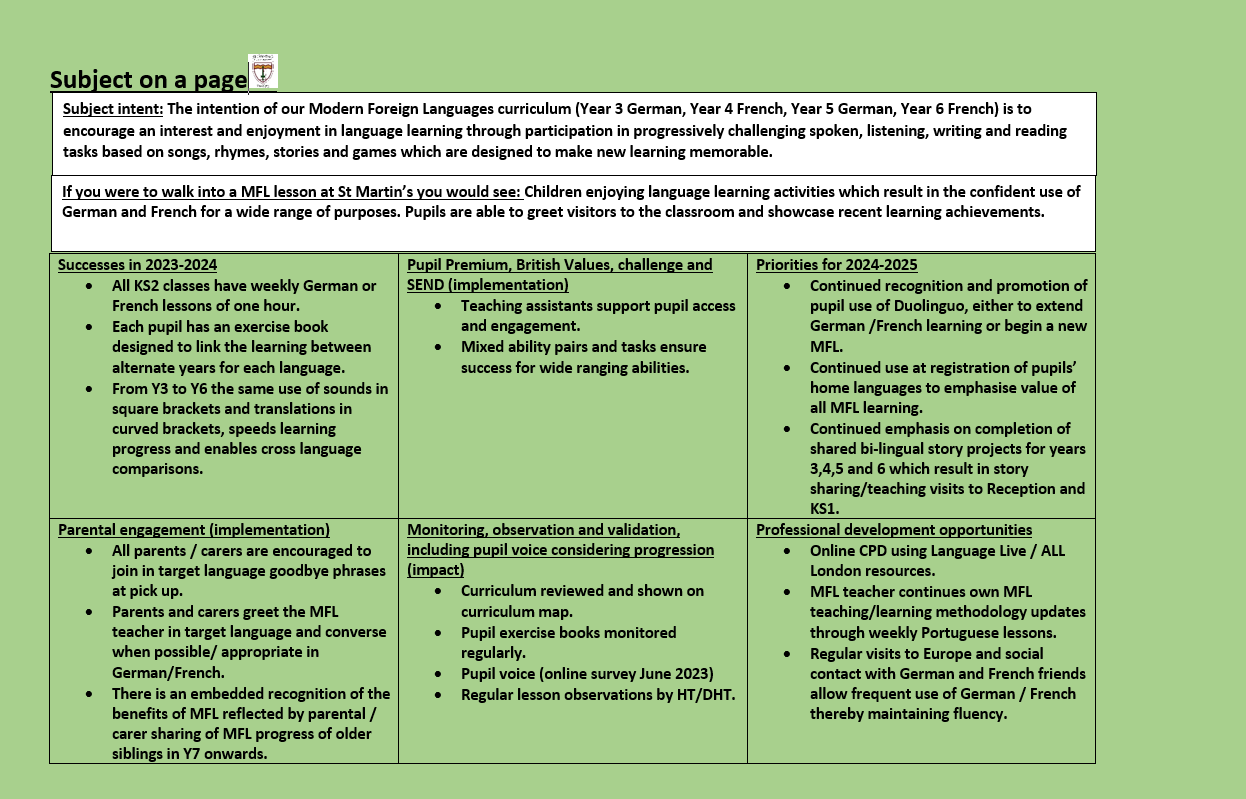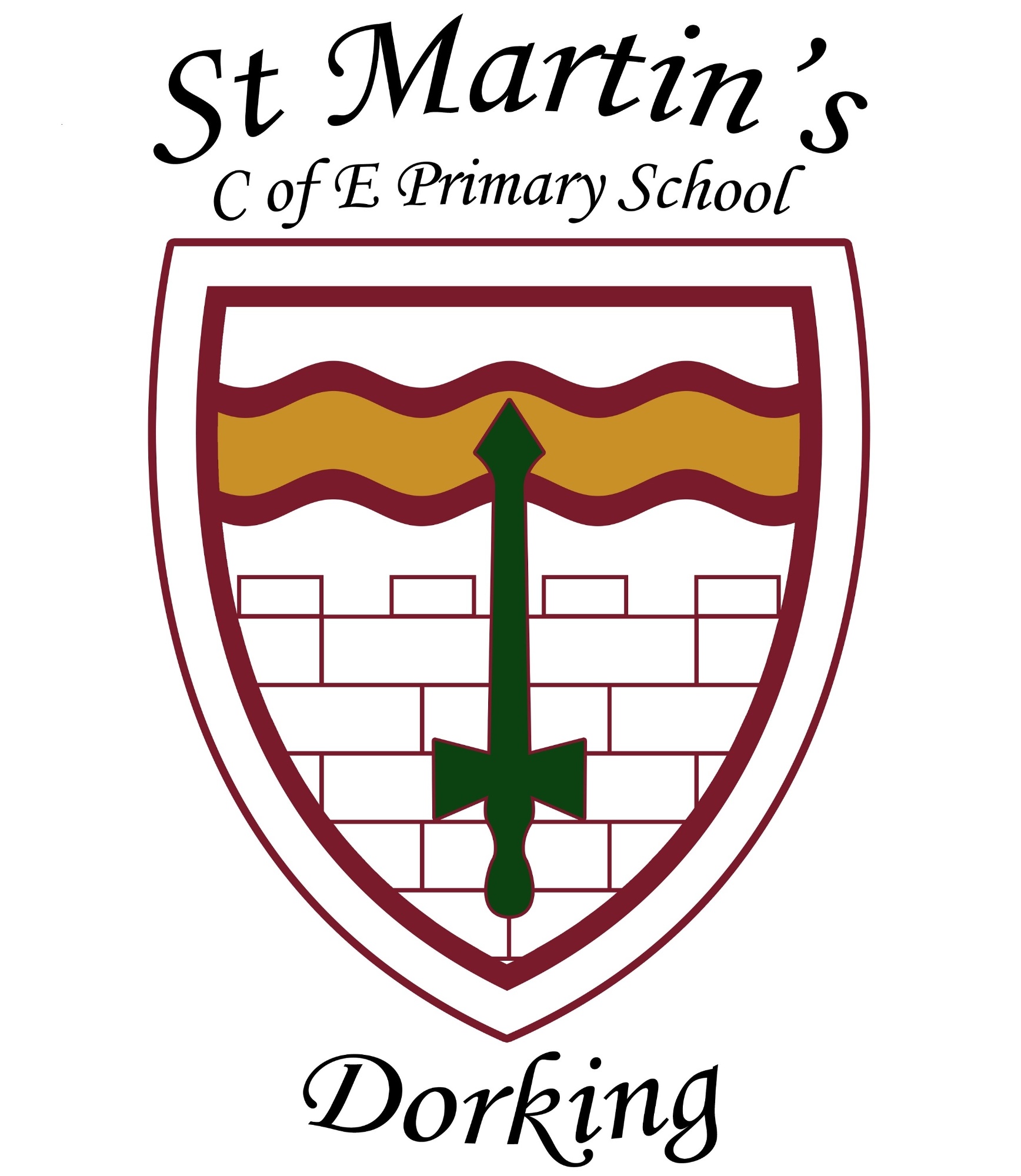Modern Foreign Languages
Our Modern Foreign Language curriculum aims to enthuse and engage children, helping them to become confident and effective language learners both at KS2 and beyond!
We use German and French to cover the skill areas specified specified in The Department of Education National Curriculum for Modern Languages for KS2 achieving "significant progress " in two languages rather than one.
Our curriculum is skills based, as required by the NC document and the current MFL GCSE mark scheme (25% speaking,25% reading , 25% writing and 25% listening).
The curriculum has been designed and developed to ensure children progress in each language in alternating years - Y3 German and Y5 German, Y4 French and Y6 French.
This prevents a blocked approach which would favour retention of any language taught in Y5 and Y6 and slippage with any language taught only in Y3/Y4.
KS2 students prepare story projects using German and French which are shared with Early Years and KS1 classes. In this way MFL is shared with younger students and incoming Y3 pupils are very keen to start German!
Summary of progression in language across the school
Year 3 German
Year 4 French
French in Year 4 aims to continue MFL learning by introducing 8/9 year olds to French. (The decision to layer languages was made to help students carry knowledge of both German and French into KS3. Enhancing their abilities as language learners and supporting their ability to engage with whichever MFL is offered in Year 7). The curriculum builds on the students’ understanding of the four skill areas - speaking/listening / writing / reading. It introduces the difference between written spellings and spoken sounds in French – sounds written in square brackets, English in curved brackets as in Year 3 and ongoing throughout KS2. Particular focus is given to French silent letters to support accurate pronunciation of spoken French. (At St Martin’s we underline these and teach the exceptions where vowels liaise with consonants). Finger actions, continue to emphasise the relationships between spellings/sounds/meanings. Key questions and answers introduce French. Greetings. Numbers 0-20 and the age question/answer. Time permitting, cultural elements like Christmas. Colours and days of the week using songs, puzzles. Noun input with definite article and indefinite article variations for masculine/feminine and plurals. Bilingual dictionary work using key story nouns. Story project including translation (French to English) and performance with bi-lingual picture booklets to KS1, revisiting /applying colour, days of the week and noun learning.
Year 5 German
In Year 5 the input audits, and briefly revises, Year 3 learning, enabling children to remember key topics and locate them in their books for future reference. A mixture of revisited topics – key questions / answers, numbers, days, months, are extended with new learning to ensure there is ongoing progress as well as confidence with what took place two years previously. New topics eg. locations in a town (revisits noun input), German geography (revisits living question/answer) today, yesterday, tomorrow date (extend number learning) questions/answers, pet questions/answers are taught as the foundation for new story translation/performance to KS1 projects – der Schneemann and, if time permits, der Katzentatzentanz.
Year 6 French
In Year 6 the input audits, and briefly revises, Year 4 learning, enabling children to remember key topics and locate them in their books for future reference. A mixture of revisited topics – key questions / answers, numbers, days, months, are extended with new learning to ensure there is ongoing progress as well as confidence with what took place two years previously. New topics eg. the weather, how are you, clothing, revision of masculine / feminine and plurals using indefinite and definite articles and introducing personal pronouns, conjugation of porter (to wear) provide the foundation for new bilingual story projects. La semaine d’avant noël (if time permits at Christmas) and Quel temps fait-il, Berthe?

